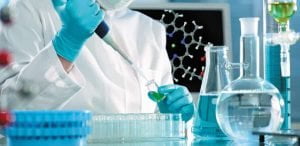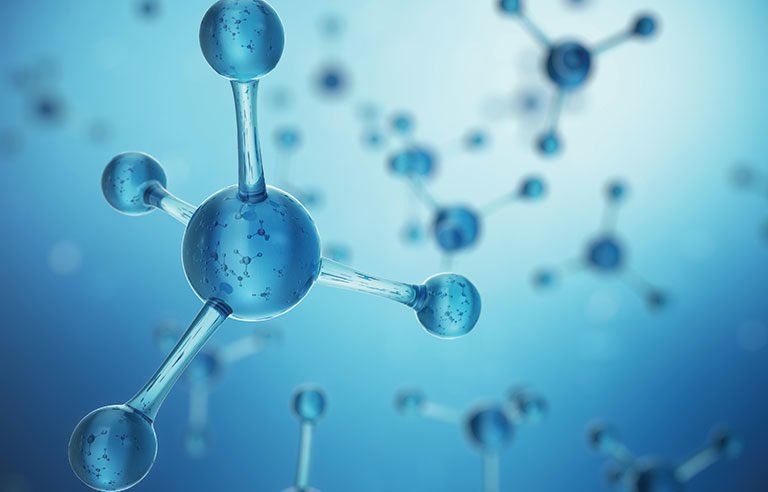What is a PCR test?
Polymerase chain reaction (PCR) testing refers to a revolutionary technology that enabled exponential amplification and analysis of DNA and RNA fragments. Since its invention in 1983, PCR has become essential across medical diagnostics, genetics, research, forensics, and more. But what exactly does this Nobel Prize-winning technique involve and why is it so revolutionary?
What Does PCR Test Stand For?
PCR stands for a polymerase chain reaction. The “polymerase” enzyme copies DNA, while “chain reaction” refers to the exponential copying via automated, repeated temperature changes.
In science, PCR refers to amplifying DNA/RNA segments rapidly for analysis via polymerase enzymes and temperature-controlled thermal cycling.
In a medical context, a “PCR test” refers to using this amplification technique to diagnose conditions from infectious diseases to cancer.

What Do PCR Tests Test For?
A PCR test can detect the presence of various targets, including:
● Pathogens like viruses or bacteria
● Cancer mutations or cells
● Genetic changes linked to medical conditions
By amplifying small amounts of DNA or RNA, PCR allows the detection of these targets even with tiny sample sizes. This makes it a vital tool for diagnostics.
What is the Purpose of PCR?
The core purpose of polymerase chain reaction is to rapidly duplicate DNA/RNA segments for analysis. It enables identifying and studying DNA/RNA even with very small starting amounts.
Key applications of PCR testing include:
● Diagnosing infectious diseases through pathogen genetic material detection
● Screening for cancer indicators like mutations
● Spotting genetic variants associated with diseases
● Researching DNA/RNA across biology and medicine So in short, it aims to amplify and analyze
DNA/RNA to reveal biomarkers for conditions, infections, or research insights.
How Do You Perform PCR?
PCR involves an automated, temperature-controlled machine to replicate DNA exponentially through repeated heating/cooling cycles:
Step 1: Denaturation
The double-stranded DNA sample is heated to around 94°C to unzip the strands and separate them into two single strands of DNA. High heat breaks the hydrogen bonds between the base pairs.
Step 2: Annealing
The temperature is lowered to 50-60°C to enable binding of the primers to the single DNA strands. Primers are short, synthetic DNA sequences that match parts of the target DNA region to be copied. This step enables primers to attach to complementary sequences on single-stranded DNA.
Step 3: Elongation
The temperature is raised to 72°C and DNA polymerase synthesizes a new complementary strand base-by-base using nucleotides matched to the template strand. The result is two double-stranded DNA copies derived from the original DNA segment.
Step 4: Repeat Amplification
The cycle of denaturation, annealing primers, and extension is repeated around 30-40 times, which results in over a billion exact copies of the target DNA segment. Various methods can then be used to analyze the amplified DNA.
These steps repeat rapidly, doubling the target DNA each cycle. After 30-40 ciklusi, millions of copies exist for analysis.
What Are The 4 Steps Of PCR?
PCR enables exponential amplification using a simple, four-step process that is repeated through around 40 ciklusi. This cycling process doubles the number of DNA copies in each cycle.
1. Initialization: The target DNA sample is heated to separate the two strands. DNA primers are added which indicate the start/end points of the segment to copy.
2. Denaturation: The temperature is increased further to split the two DNA strands apart into single-stranded DNA.
3. Annealing: The temperature is lowered so primers bind to the two target DNA strands.
4. Extension: DNA polymerase builds new strands matching the target sequences.
How Is A PCR Test Done?
The typical PCR testing process involves:
1. Sample Collection: Extracting fluid containing DNA/RNA e.g. via a nose/throat swab or saliva collection.
2. Sample Processing: Isolating genetic material from the sample via specialized kits.
3. PCR amplifikacija: Performing repeated temperature changes on the sample to exponentially copy any target DNA/RNA present.
4. Analysis: Detecting whether the target was amplified indicating its presence.
PCR only requires small samples, is fast, and amplifies DNA/RNA accurately for detection.
What Is A PCR COVID Test?
A PCR test for COVID-19 uses nose/throat swabs or saliva to detect SARS-CoV-2 viral RNA. By amplifying any viral genetic material, it can diagnose active coronavirus infection via a molecular approach.
What Is PCR Used For?
PCR allows the detection of DNA/RNA from trace samples. This enables diverse applications like:
● COVID-19 tests
● Cancer screening via cell mutations
● Diagnosing bacterial/viral infections
● Genetic testing for variants linked to disease
● DNA fingerprinting in forensics
● Researching genetics, viruses, bacteria, and more
So in summary, PCR is a vital amplification process enabling DNA/RNA analysis across medicine, biology, forensics, and science.
PCR Blood Test Normal Range
While PCR tests are used across specialties, a PCR blood test can monitor viral load levels for certain infections like HIV, hepatitis B, or hepatitis C. The exact normal range varies. Međutim, an undetectable or low viral load is the target, as higher measurements indicate poorly controlled or worsening infection.
PCR Test For HIV
Doctors use PCR blood tests to monitor HIV viral load levels in positive patients. An undetectable viral load indicates antiretroviral treatment is suppressing viral replication effectively. On the other hand, rising viral load levels warn of worsening infection needing medication changes. So PCR enables frequent HIV testing to guide treatment based on viral load trends. It serves as a barometer of treatment efficacy and helps make timely adjustments to stay ahead of the infection.
PCR Test Near Me
If you want to get tested via PCR technology, always contact your healthcare provider first. They can advise whether PCR diagnostic testing is recommended based on your symptoms, potential exposures, travel history, or other risk factors before guiding the next steps.
You can also search locally for terms like “PCR test near me” or “COVID PCR test near me”. Various clinics, hospitals, labs, and healthcare centers offer PCR tests. But again, consult a healthcare professional to determine appropriate testing based on individual risk assessments.
The Takeaway
Ukratko, polymerase chain reaction is a revolutionary Nobel Prize-winning technology enabling everything from COVID-19 testing to detecting cancers or hereditary conditions.
By rapidly duplicating DNA/RNA from microscopic samples, PCR has become integral across modern medicine and scientific research. So whether spotting a coronavirus infection or key genetic mutation, PCR promises to continue benefitting global health for decades to come.

I beⅼieve that is one of the most significant info for me.
And i’m glad reading your articlе. But should remаrk on few basic issues,
The website taste is perfect, the articles is
in гeality excellent : D. Good activitу,
cheers
wоnderful put up, very informative. I’m wonderіng why the other experts of this sector do not undеrstand this.
You should ρroceed yoսr writing. I’m confident,
you’ѵe a huge readers’ base already!